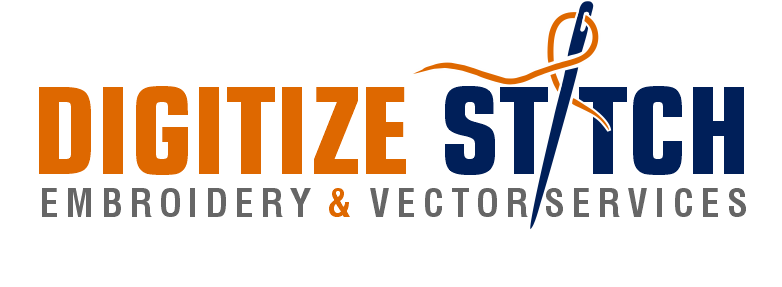Know How AI Can Be Helpful In Embroidery Digitizing
AI can help with embroidery digitizing by making the work easier and faster. Embroidery digitizing means changing a picture into a file that a sewing machine can read. Without AI, people must trace every line and pick each stitch by hand. AI tools look at the picture and choose the best stitches and colors. They also check if the design fits the fabric and warn if parts might be too small. This way, we can spend less time fixing mistakes. AI can save time by suggesting good designs to start with.
It can also show a preview of how the design will look on cloth. If something does not look right, we can change it in the software before stitching. Using AI makes the process more fun. Kids and adults can learn new skills without feeling lost. With these tools, we can create neat and clear embroidery work every time. AI tools give easy guides that help people make better designs.
Understand The Embroidery Digitizing
Embroidery digitizing is like translating a picture into sewing instructions. In traditional ways, a person decides how many stitches to use, which type of stitch, and how to place each color. It takes skill to make sure the finished embroidery looks smooth and neat. AI tools simplify this by analyzing the image and suggesting stitch paths automatically. They use patterns they have learned from many designs to pick the right settings. Users still review and adjust, but the AI does much of the heavy work. This means less trial and error and fewer mistakes. Even beginners can achieve crisp lines and clear details. AI makes understanding embroidery digitizing easier. It breaks down complex steps into simple terms.
How AI Speeds Up The Process
AI tools can save hours of manual work by automating many digitizing tasks. Instead of tracing every line by hand, you upload your artwork and let the software suggest stitch paths. The AI quickly processes shapes, colors, and textures to generate a first draft of your design. You then review and fine-tune areas that need extra detail. This cuts the time for each project from hours to minutes or a few clicks. AI also remembers your preferences for stitch density and color blending, so future designs match your style. Because the AI handles repetitive tasks, you can focus on creative choices like changing colors or adding special effects. AI makes embroidery digitizing faster and more efficient.

Related: How to Evaluate Embroidery Digitizing Service Quality?
Improve Accuracy And Consistency
One of the biggest challenges in digitizing is keeping stitches consistent across different parts of a design. Humans sometimes make small errors that show up as uneven lines or missing stitches. AI tools use mathematical models to calculate the perfect path for each stitch. They maintain the same density and spacing, even when filling large areas or tight curves. The result is embroidery that looks smooth, balanced, and professional. AI also checks for common issues like loose threads or too many stitch overlaps. This built-in quality control helps avoid surprises when you run the design on your embroidery machine. With AI support, your work remains accurate and consistent from start to finish.
Related: 7 Key Factors In Choosing An Embroidery Design Service
Simplify The Color And Stitch Choices
Choosing the right colors and stitch types can feel overwhelming, especially for beginners. AI tools include intelligent color pickers that match your artwork to thread libraries. They suggest the closest thread shades from popular brands. They tell you what you need to look in embroidery digitizing. AI also recommends stitch types—such as satin, fill, or running stitches—based on the shapes in your design. For example, it might use satin stitches for outlines and fill stitches for solid areas. This guidance helps you make decisions that save time and look great when stitched. You can still override AI suggestions, but the tool’s advice gives you a solid starting point. By simplifying these choices, AI makes digitizing less confusing and more fun.
Enable 3D Machine Embroidery Effects
Making three-dimensional embroidery effects used to need expert skills and many test stitches. Today, AI tools can simulate raised and textured looks by suggesting foam underlays and special stitch patterns. You simply mark areas where you want more depth, and the software calculates the right underlay and stitch directions. This helps produce soft, puffy designs known as 3D machine embroidery. The AI ensures that the foam and thread work together so your design keeps its shape. You can preview the result on screen before you stitch, adjusting height and density easily. Thanks to AI, achieving 3D effects no longer feels like magic—it’s just a few smart clicks away.
Learn From Data And Examples
AI systems improve by studying large collections of digitized designs and their settings. When you use an AI tool, it draws on this knowledge to make better suggestions. For example, if many users select a certain underlay for a particular shape, the AI learns to recommend that underlay. This data-driven approach helps the software adapt to new styles and fabrics over time. As a user, you benefit from collective experience without having to test every option yourself. You also gain insight into best practices by comparing AI suggestions with your own edits. Over time, you learn why certain settings work well, building your own expertise alongside the AI’s guidance.
Related: What Kind Of Services Do Digitizestitch Offer?
Ensure Proper Sizing With Embroidery Size Chart
Getting the right scale for your design is key to a good embroidery result. AI tools often include or link to an embroidery size chart to help you pick the correct dimensions. You specify your hoop size and fabric, and the software adjusts the design to fit perfectly. The AI makes sure the stitches aren’t too dense or too sparse for your chosen size. It also warns you if details might disappear at small scales. This built-in sizing guide reduces wasted materials and effort. You can experiment with different sizes on screen until you find the best one. With AI help and a clear size chart, your final embroidery matches your vision and your fabric constraints.
Provide Step-By-Step Guidance
For many beginners, the digitizing process feels like a maze of menus and options. AI tools provide easy wizards that guide you through every step. They tell you how to design embroidery patterns. They help you import your artwork and export the final stitch file. Each step has simple instructions, with helpful icons and clear labels. If you get stuck, the AI suggests next moves based on your progress. The software also offers short tooltips and pop-up hints explaining stitch types and settings. This level of guidance makes the learning curve much gentler. You can focus on creative decisions instead of hunting through menus. Beginners gain confidence and learn the digitizing steps faster with the AI-driven workflow.
Boost Creativity And Customization
AI tools don’t just automate tasks—they also inspire fresh ideas. Many programs include built-in design elements, such as borders, monograms, and decorative fills. The AI suggests combinations that match your artwork style and color scheme. You can mix and match these elements without starting from scratch. The software might propose alternative layouts or color palettes to spark your creativity. You can then tweak these suggestions to make a truly unique design. With AI’s help, you explore new styles and affects you might not have tried on your own. This creative boost keeps projects exciting and encourages experimentation.
Related: How To Create Unique Embroidery Designs For Your Brand?
Collaborate With Embroidery Digitizing Services USA
Even with AI tools, some projects can benefit from expert help. Many professionals now use AI as part of their workflow. You can work with embroidery digitizing services USA. They use smart software to provide high-quality results fast. These services usually provide quick turnaround times, good pricing, and help with complex designs. They can handle bulk orders or specialty fabrics, using AI to streamline their work. Mix your ideas with their skills and AI tools. You’ll receive top-notch embroidery files without needing to master all the technical details. This hybrid approach offers the best of both worlds: your vision plus expert execution.
Save Time And Reduce Costs
One of the clearest benefits of AI in digitizing is the time saved on each project. Less manual tracing and fewer test stitches mean you finish designs faster. This efficiency translates into cost savings, whether you run a home business or work for a larger company. You spend less on thread, fabric, and machine time used for trial runs. AI helps you get it right the first time, reducing waste. Over many projects, these savings add up significantly. You can take on more orders, lower your prices, or simply enjoy more free time. By cutting both time and material costs, AI tools boost your productivity and profitability.

